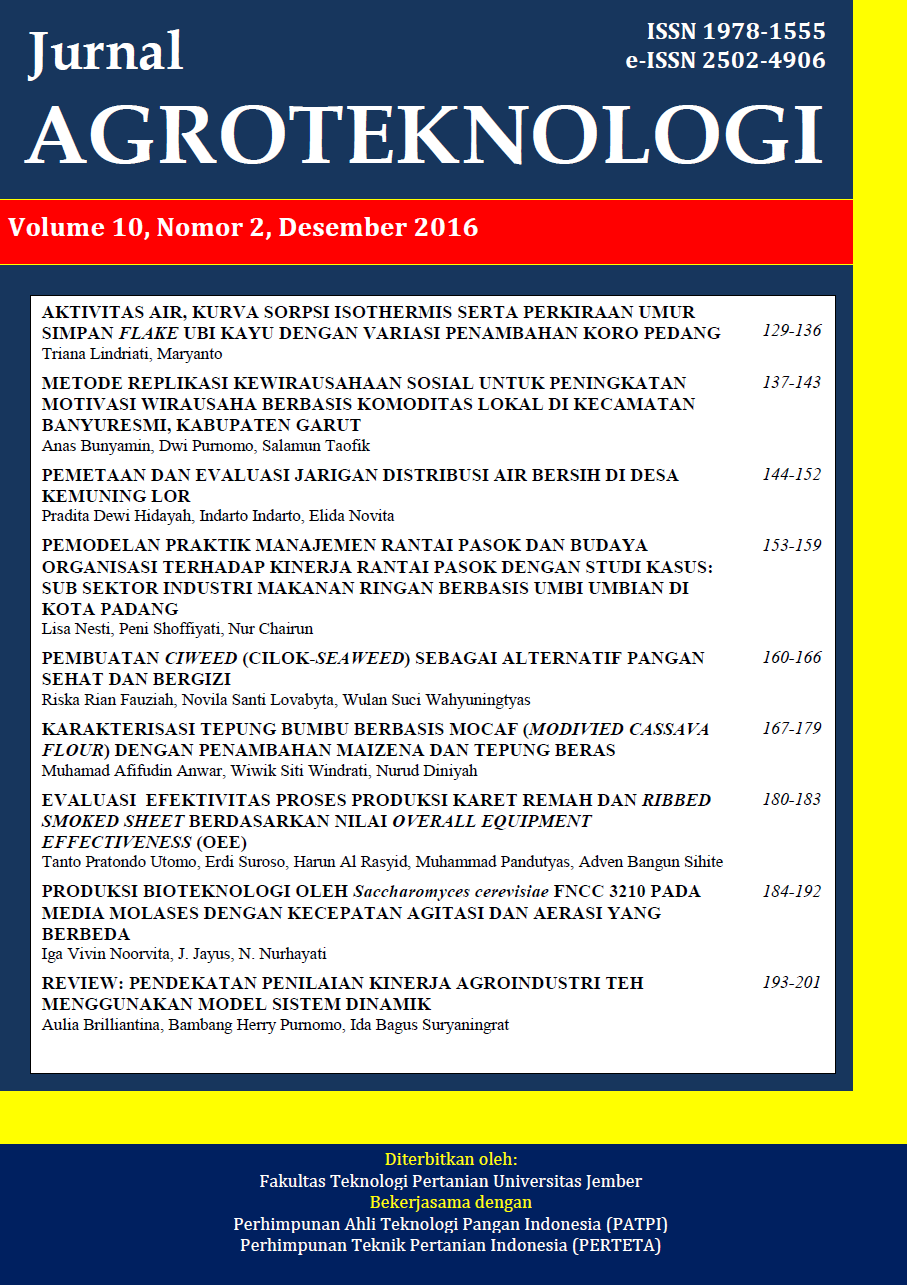PEMODELAN PRAKTIK MANAJEMEN RANTAI PASOK DAN BUDAYA ORGANISASI TERHADAP KINERJA RANTAI PASOK DENGAN STUDI KASUS: SUB SEKTOR INDUSTRI MAKANAN RINGAN BERBASIS UMBI-UMBIAN DI KOTA PADANG
Abstract
Supply chain management application that has been there, has yet to achieve efficiency and effectiveness in managing suppliers to remain loyal to the company. Still a bit of research on the relationship between supply chain strategy with organizational culture and explains that the design of supply chain information effectively requires an understanding of the cultural traits that underlie the organization. The purpose of this study is to model Organizational Culture and Practices of Supply Chain Management Supply Chain Performance Against the Case Study: Sub Industry Sector-based Snacks tubers in Padang. The result of this research is the average respondent answered an organizational culture focused on results than attention to the techniques and processes used to achieve neutral results and activities of the organization emphasizes the status quo as a contrast to the growth of the organization's culture is neutral. Item questions that represent the performance of supply chain obtained an average yield of respondents agreed the need for measurement results that can be trusted, the necessity of the desire of the staff and employees to assist customers and provide service with a response in receiving requests, complaints, suggestions, criticism, complaints, and so on the product or service received by consumers, need the ability to adapt and work effectively in different circumstances and with different individuals or groups, the need for the production trend, quarterly consolidated balance sheet, listing the name of the supplier / principal. For Item questions about the practice of supply chain management stated that the importance of the strategic partnership agreed suppliers 80% and 20% neutral, the importance Partner) agreed, as well as relationships with customers, the level of information sharing, the quality of information while the items declared neutral delay. By using SEM obtained a significant correlation between the practices of supply chain management of organizational culture with determination coefficient of 0,94 as well as between management practices on the performance of supply chain and the performance of a significant relationship with determination coefficient of 0,8 but not acquired a significant relationship between organizational culture with the performance of the supply chain although the coefficient of determination of 0,71.
Keywords: organizational culture, supply chain, performance

This work is licensed under a Creative Commons Attribution-ShareAlike 4.0 International License.
Jurnal Agroteknologi has CC-BY-SA or an equivalent license as the optimal license for the publication, distribution, use, and reuse of scholarly work. Authors who publish with this journal retain copyright and grant the journal the right of first publication with the work simultaneously licensed under a Creative Commons Attribution-ShareAlike 4.0 International License that allows others to share the work with an acknowledgment of the work's authorship and initial publication in this journal.
 JURNAL AGROTEKNOLOGI
JURNAL AGROTEKNOLOGI 










.png)

